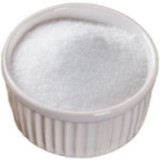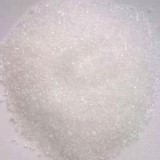 |
Sodium Sulfate Anhydrous Decahydrate SDS Safety Data Sheet of Supplier Exporter Manufacturers' Representative |
Email: info@ammol.org |
Call Toll Free +1-855-552-6665 |
Sodium Sulfate Anhydrous Decahydrate
CAS Number: 7757-82-6 Sodium Sulfate Anhydrous and 7727-73-3 Sodium Sulfate Decahydrate
Molecular Formula: Na2SO4
Molecular Weight: 142.04


Sodium Sulfate Anhydrous Decahydrate
Sodium Sulfate or Sodium Sulphate SDS, Safety Data Sheet
MSDS Sheet, Material Safety Data Sheet 04-Feb-24
1. PRODUCT DESCRIPTION
Product Name & Other Names: Sodium Sulfate or Sodium Sulphate
Synonyms: Sodium sulfate decahydrate; Disodium sulfate decahydrate; Glauber’s salt; Sulfuric acid, sodium salt, decahydrate; Sodium sulfate, 10-hydrate
CAS Number: 7757-82-6 (Anhydrous) 7727-73-3 (Decahydrate)
EINECS EC Number: 231-820-9
Relevant uses and uses advised against (if any): Industrial Manufacturing.
Supplier: American Molecules, 9910 Bent Oak Dr, Houston, TX 77040, USA.
Call Toll Free: 1-855-55-AMMOL 1-855-552-6665.
In case of emergency contact: Will be given with the supply.
2. HAZARD IDENTIFICATION
GHS, Globally Harmonized System Classification in accordance with 29 CFR 1910
Classification according to Regulation (EC) No 1272/2008
Not a hazardous substance or mixture according to Regulation (EC) No. 1272/2008.
This substance is not classified as dangerous according to Directive 67/548/EEC.
Labeling according to GHS & Regulation (EC) No 1272/2008
GHS Label Elements None |
Signal Words: None
Precautionary statements:
P261: Avoid breathing dust/fume/gas/mist/vapors/spray.
P262: Do not get in eyes, on skin, or on clothing.
P281: Use personal protective equipment as required.
P302+P352: IF ON SKIN: Wash with plenty of soap and water.
P304+P340: IF INHALED: Remove victim to fresh air and keep at rest in a position comfortable for breathing.
P305+P351+P338: IF IN EYES: Rinse cautiously with water for several minutes. Remove contact lenses, if present and easy to do. Continue rinsing.
P337+313: If eye irritation persists get medical advice/attention.
3. COMPOSITION/INFORMATION ON INGREDIENTS
Product Name & Other Names: Sodium Sulfate or Sodium Sulphate
Synonyms: Sodium sulfate decahydrate; Disodium sulfate decahydrate; Glauber’s salt; Sulfuric acid, sodium salt, decahydrate; Sodium sulfate, 10-hydrate
CAS Number: 7757-82-6 (Anhydrous)
EINECS EC Number: 231-820-9
4. FIRST AID MEASURES
Always seek medical attention after first aid measures are provided.
Eyes - Flush with water for at least 15 minutes, raising and lowering eyelids occasionally. Get medical attention if irritation persists.
Skin - Thoroughly wash exposed area for at least 15 minutes. Remove contaminated clothing. Launder contaminated clothing before reuse. Get medical attention if irritation persists.
Ingestion - If swallowed, if conscious, give plenty of water and induce vomiting immediately as directed by medical personnel. Immediately call a physician.
Inhalation - Remove to fresh air. Give oxygen if breathing is difficult; give artificial respiration if breathing has stopped. Keep person warm, quiet, and get medical attention.
5. FIREFIGHTING PROCEDURES
Flash Point (Method Used): N/A
Extinguisher Media: Use water spray, alcohol-resistant foam, dry chemical or carbon dioxide..
Special Information In the event of a fire, wear full protective clothing and NIOSH-approved self-contained breathing apparatus with full face piece operated in the pressure demand or other positive pressure mode. At high temperatures under fire conditions, it may produce toxic or irritating fumes.
Unusual Fire and Explosion Hazards: Heated to decomposition, however, toxic oxides of sulfur may be evolved.
6. SPILL OR LEAK PROCEDURES
Personal precautions, protective equipment, and emergency procedures: Avoid breathing dust/fumes/gas/mist/vapors/spray. Use individual protective equipment (waterproof boots, suitable protective clothing, safety glasses, etc.). Restrict unprotected personnel from the area. Prevent any contact with hot surfaces. Do not approach facing the wind.
Environmental precautions: Do not let the product enter drains, soil, or water sources.
Methods and materials used for containment Cleanup procedures and Storage: Do not inhale dust, vapors, mist, or gas. Avoid dust formation. Contain spilled material. Cover with an inert, non-combustible absorbent material, (e.g. sand, earth, diatomaceous earth, vermiculite). Use a shovel to put the material into a convenient waste disposal container.
7. SPECIAL PRECAUTIONS
Precautions for safe handling: Apply according to good manufacturing and industrial hygiene practices. Ensure proper ventilation. In case of insufficient ventilation, wear suitable respiratory equipment. Wash thoroughly after handling. Do not drink, eat, or smoke while handling. Avoid contact with skin, eyes, and clothing. Minimize dust generation. Avoid breathing dust/fumes/gas/mist/vapors/spray. Keep container tightly closed. Avoid ingestion and inhalation. Use individual protective equipment (waterproof boots, suitable protective clothing, safety glasses, etc.).
Conditions for safe storage, including any incompatibilities: Store in cool, dry, and ventilated area away from heat sources and protected from sunlight in tightly closed original container. Keep air contact to a minimum. Store protected from heat, sparks and ignition sources and incompatible materials. Avoid contact with skin and eyes. Avoid inhalation of dust/mist/vapor. Do not store with incompatible materials like strong oxidizing agents, aluminum, strong acids, strong bases. Hygroscopic.
8. SPECIAL PROTECTION INFORMATION
Respiratory Protection (Specify Type): None needed under normal conditions of use with adequate ventilation. NIOSH approved equipment should be worn if PELs are exceeded.
Ventilation:
Local Exhaust: Yes
Mechanical (General): Yes
Protective Gloves: Rubber, neoprene, PVC, or equivalent.
Eye Protection: Splash proof chemical safety goggles should be worn at all times.
Other Protective Clothing or Equipment: Lab apron, eye wash, and safety shower.
9. PHYSICAL DATA
Appearance: White crystals or powder.
Odor: Odorless.
Odor threshold: Not applicable.
pH: No data found.
Relative density: around 2.7
Melting Point: 888C
Initial boiling point and boiling range: No data found.
Flash point: No data found.
Auto-ignition temperature: No data found.
Decomposition temperature: No data found.
Upper/lower flammability or explosive limits: No data found.
Vapor pressure: No data found.
Vapor density: No data found.
Evaporation rate: No data found.
Flammability (solid, gas): No data found.
Partition coefficient: n-octanol/water: No data found.
Solubility in Water: 21%
Viscosity: No data found.
10. REACTIVITY DATA
Stability: Stable under ordinary conditions of use and storage. Hygroscopic.
Conditions to Avoid: Incompatibility and moisture.
Incompatibility (Materials to Avoid): Aluminum, strong acids, strong bases.
Hazardous Decomposition Products: If heat to decomposition this product may evolve toxic oxides of sulfur.
Hazardous Polymerization: Will not occur.
11. TOXICITY DATA
Toxicity Data: LD50 Oral - Mouse - 5989 mg/kg
Carcinogenicity: No component of this product present at levels greater than or equal to 0.1% is identified as possible or confirmed human carcinogen by IARC, ACGIH, OSHA and NTP.
Teratogenic Effects: No data found.
Mutagenic Effects: No data found.
Developmental Toxicity: No data found.
Reproductive Effects: No data found.
12. ECOLOGICAL DATA
Toxicity to fish:
LC50 - Gambusia affinis (Mosquito fish) - 120 mg/l - 96 h
LC50 - Lepomis macrochirus - 4.380 mg/l - 96 h
Toxicity to daphnia and other aquatic invertebrates:
EC50 - Daphnia magna (Water flea) - 2.564 mg/l - 48 h
Environmental Toxicity: This material is not expected to be toxic to aquatic life.
Environmental Fate: When released into the soil, this material is expected to leach into groundwater. This material is not expected to significantly bio accumulate.
Persistence and Degradability: Unlikely to persist due to water solubility.
Mobility: Likely to be mobile due to water solubility.
Bioaccumulation/ Accumulation: This material is not expected to significantly bio accumulate.
Results of PBT and vPvB assessment: No data found.
13. DISPOSAL INFORMATION
Waste Disposal Methods: Dispose in accordance with all applicable regulations.
14. TRANSPORT INFORMATION
Land Transport DOT USA, TDG Canada & ADR/RID Europe: Not regulated.
Sea Transport IATA/ICAO: Not regulated.
Air Transport IATA/ICAO: Not regulated.
15. REGULATORY INFORMATION
USA Regulations:
SARA 311/312 Hazards: See section 2.
California Prop. 65 Components: This product does not contain any chemicals known to State of California to cause cancer, birth defects, or any other reproductive harm.
DISCLAIMER: The information and recommendations set forth herein are presented in good faith and believed correct as of the date hereof. It is compiled from various sources, and it is not necessarily all inclusive nor fully adequate in every circumstance. In addition, these suggestions should not be confused with nor followed in violation of applicable laws, regulations, rules, or insurance requirements applicable. This SDS MSDS sheet is intended only as a guide to the appropriate precautionary handling of the material by a professionally trained person using this product. Individuals receiving the information must exercise their independent judgment in determining its appropriateness for a particular purpose. This shall not constitute a guarantee for any specific product features and shall not establish a legally valid contractual relationship. In no case shall our company be liable to loss or damages by the product user.
We also supply Sodium Sulfate Anhydrous Decahydrate of EP BP Ph Eur Grade.
Please visit SDS Safety Data Sheet of Sodium Sulfate Anhydrous Decahydrate Suppliers.
American Molecules, also known as ammol.org is a distributor, supplier and manufacturers' representative of all types of Pharmaceuticals, Functional Ingredients, Excipients and Specialty Chemicals in Texas USA. Our principals manufacture supply and export USP NF BP, Ph Eur, etc grades of chemicals pure and reagent grade, mineral fortifiers, FCC food grade. Tailor made particle size and customized specifications are offered. The principal's facility is having one or more of the certifications like FDA approval and GLP, cGMP, ISO9001, ISO14001, ISO/IEC 17025, ISO22000, FSSC 22000, ISO45001, FSSAI, Kosher, HALAL, COPP, WHO-GMP certified and Written Confirmation (WC) for export to Europe is available. The manufacturers suppliers and exporters observe WHO Good Manufacturing Practices and Good Laboratory Practices.





Suppliers and Manufacturers' Representative:

9910 Bent Oak Dr
Houston, TX 77040, USA
Call Toll Free: 1-855-55-AMMOL 1-855-552-6665
Email: info@ammol.org